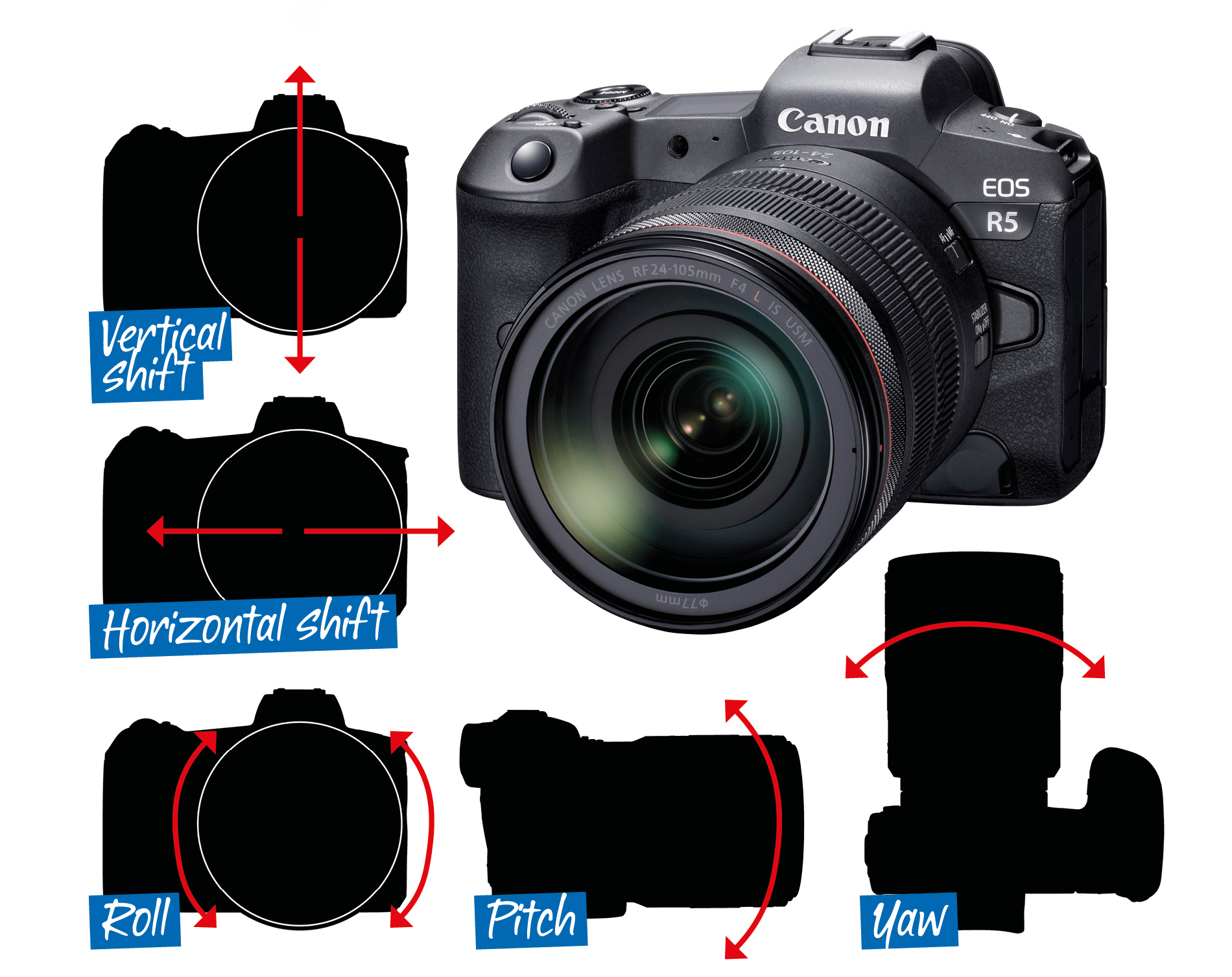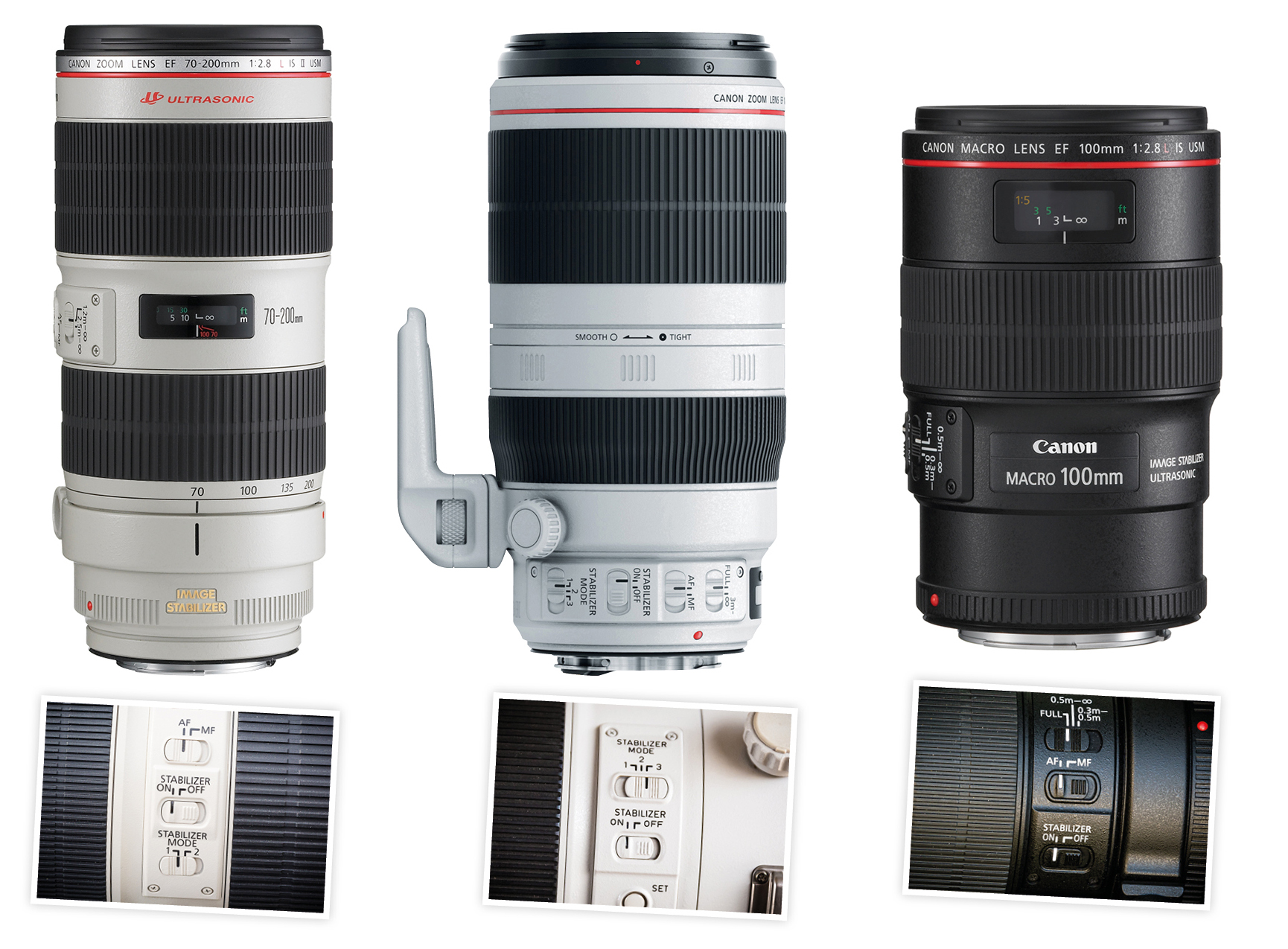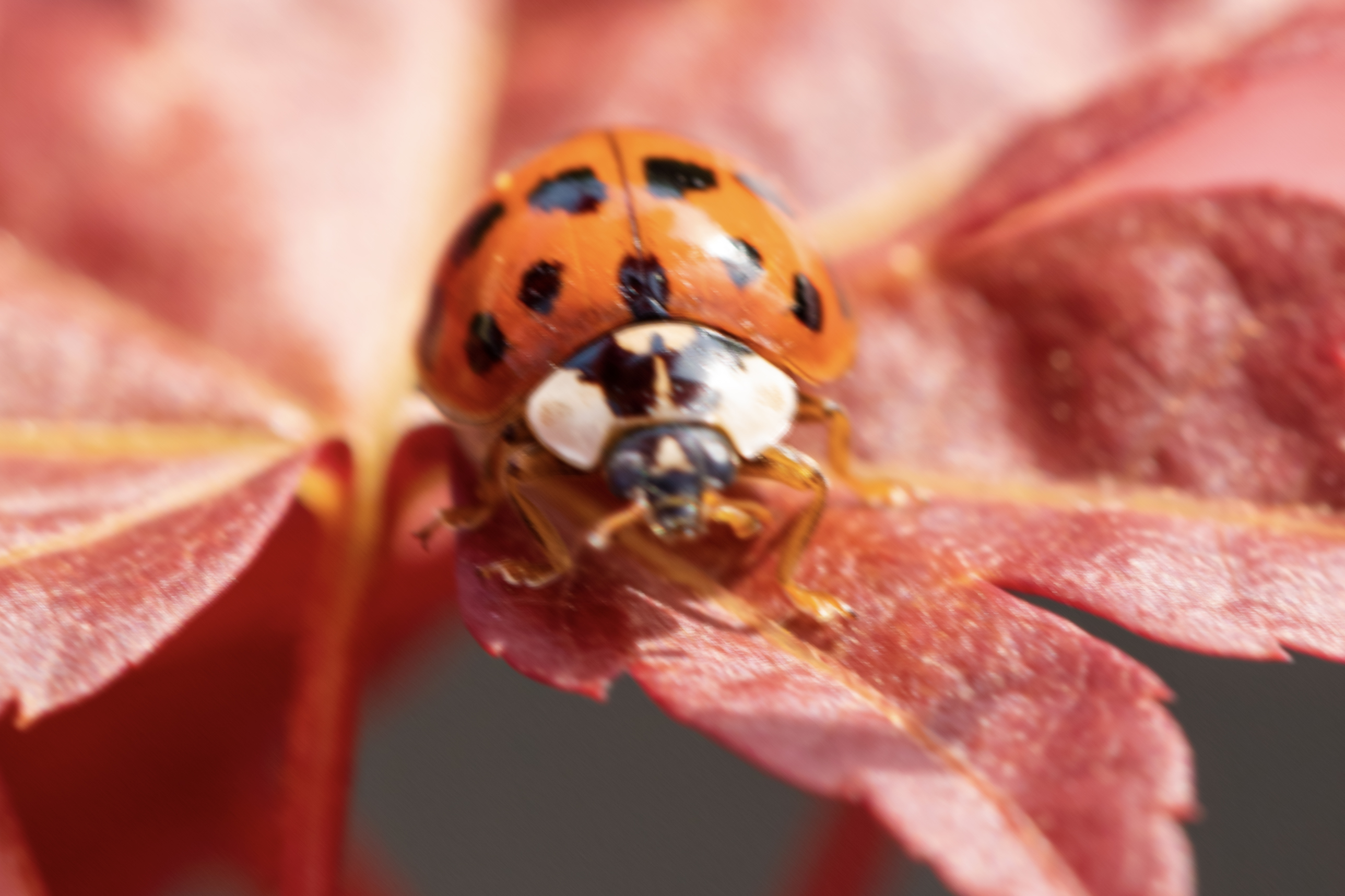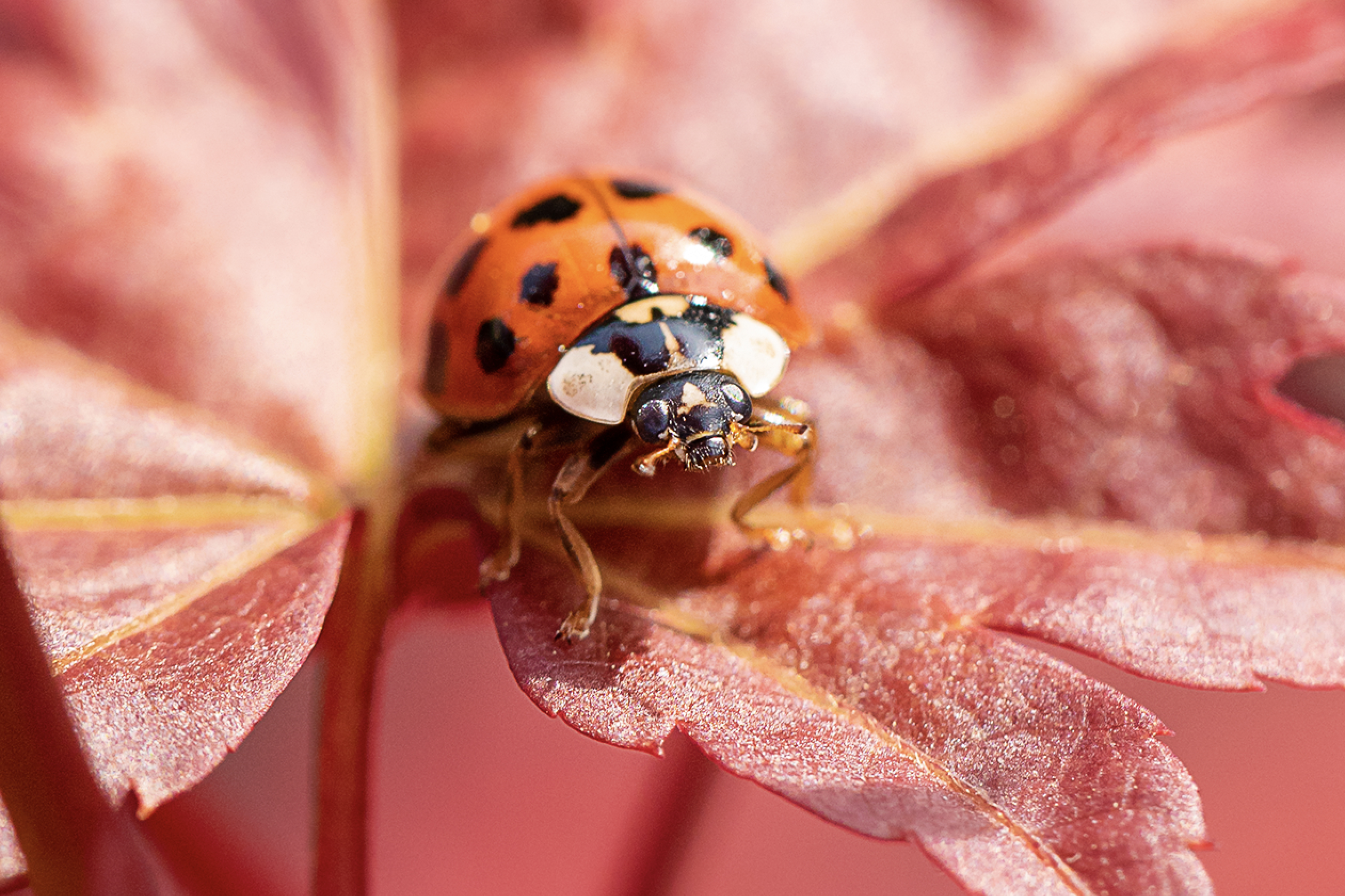Which Canon Eos Cameras Have Built In Image Stabilization
Canon School: Make the most of Canon'south Paradigm Stabilization system

Welcome to our new Canon School tutorial series part seven. Learn all you demand to know virtually Catechism'due south Image Stabilization options in-photographic camera and on lenses for sharper images and videos.
Can you lot believe that Canon'south Image Stabilizer (IS) technology is over 25 years former? Launched in 1995, the EF 75-300mm f/four-v.vi IS USM was the first interchangeable photographic camera lens to boast built-in optical paradigm stabilization – by today's standards though, 2 stops of shake reduction is hardly something to avowal almost. Canon continues to be at the forefront of stabilized lens design, with the latest IS lenses typically offering four or v stops of milkshake reduction for sharper results at slower shutter speeds.
Canon had been a bit irksome off the mark is with in-trunk prototype stabilization (IBIS) in its EOS cameras – a number of rival mirrorless camera manufacturers are already using this technology – all the same Canon's EOS R5 and EOS R6 now have 'true' IBIS.
• Best Canon lenses (opens in new tab)

i. Strong and stable shooting
When vibrations are detected by an IBIS system, the imaging sensor is adjusted via electromagnets in order to go on the epitome as stable as possible. The EOS R5's implementation will offer 5-centrality stabilization, pregnant that it'll minimize vibrations in five directions: vertical and horizontal shifts, plus pitch, yaw and gyre movements. Catechism as well says the EOS R5'south IBIS will 'work in harmony' with the optical IS of Canon RF lenses – presumably giving even more than stops of shake reduction when shooting.
IBIS has a few advantages, chief being it can stabilize nigh any lens that doesn't take IS. A possible drawback, though, is it isn't usually as effective at longer focal lengths, where the greater magnification (and bulk) of a telephoto lens can require more compensation.

two. Canon gyroscopic engineering
Each of Canon's IS lenses uses gyro sensors inside the barrel to detect horizontal and vertical movement of the lens. It and then counteracts this movement by shifting a grouping of internal elements in the opposite management to stabilize the image. But while the procedure is the same, the manner it's implemented across the IS lens range varies.

3. Canon lens Prototype Stabilization
The majority of IS lenses have a uncomplicated switch to plough the IS function on or off. With IS enabled, the photographic camera automatically shifts from standard all-round stabilization to one that's designed for panning when it detects the camera existence moved in a single direction for a brusk menstruation of fourth dimension. The panning stabilization corrects camera movement in only one plane – so if yous're panning the camera from left to right to rails a motorcar, for instance, simply vertical vibrations will be reduced.
Many of Canon'southward L-series telephoto lenses have an IS style switch that gives you lot manual command over the blazon of stabilization. Older lenses offer a choice of ii modes: Mode 1 is the full general purpose choice, while Way 2 optimizes the stabilization for panning. L-serial telephotos add a third mode, which merely stabilizes the image when the exposure is made. This tin can give a more natural-looking image when shooting action. With the other modes, prototype stabilization kicks in the moment the shutter release button is half-pressed.
Some of Canon's macro lenses accept a Hybrid Stabilizer. This system has a on/off switch and corrects for angular milk shake every bit well vertical/horizontal 'shift' shake that's more common with close-up photography.


iv. How slow can you go?
The rule of pollex for sharp handheld shots is to ensure the shutter speed is at least equivalent to (ideally faster than) the focal length of the lens. So with a 60mm lens, the shutter speed should be at least i/threescore sec to avoid the effects of camera milkshake. But if you're shooting in depression lite, or you want to use a smaller aperture, the shutter speed may be slower. You can, increase the ISO to achieve a faster shutter speed, but you may non be able (or desire) to push it. This is where an IS lens tin can save you.
Canon's image stabilization systems, whether they're in-lens or in-photographic camera, are rated in 'stops'. A stop is a mensurate of exposure. When a lens says it offers four stops of epitome stabilization, this ways the camera milk shake reduction is equivalent to using a shutter speed that's four times faster. So, with IS switched on, a shutter speed of 1/25 sec could potentially give an epitome that's equally sharp every bit one taken at 1/200 sec. This is considering each 'stop' is equivalent to a shutter speed that'southward twice as fast: i/25 sec – one/50 sec – 1/100 sec – 1/200 sec.
I say 'potentially' because your mileage may vary when it comes handheld shots. If your technique isn't and then good, or the lens is beefy, or you're shooting in windy conditions, then you lot might not be able to get sharp results at the number of stops indicated. Catechism measures the effective performance of the IS system using a vibrating machine, rather than actual handheld shots, so your experience of using the lens may exist different.
Read more than:
Canon DPP: Catechism Digital Photograph Professional tutorials (opens in new tab)
All-time video lights: continuous video lighting for vlogging and filmmaking (opens in new tab)
The all-time laptops for video editing: edit your footage easily, wherever you are (opens in new tab)
The all-time keyboards for video editing! (opens in new tab)
Canon EOS M6 Mark 2 is better than the Canon EOS R (opens in new tab)

Give thanks you for reading 5 articles this calendar month* Join at present for unlimited access
Enjoy your first month for simply £1 / $1 / €one
*Read 5 complimentary articles per month without a subscription

Join now for unlimited access
Try showtime calendar month for just £1 / $ane / €1
Related manufactures
Source: https://www.digitalcameraworld.com/tutorials/canon-school-make-the-most-of-canons-image-stabilization-system
Posted by: taylorhimbeyer.blogspot.com

0 Response to "Which Canon Eos Cameras Have Built In Image Stabilization"
Post a Comment